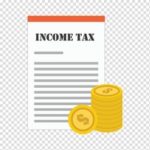How much Deduction for Cpf Contribution Rate in Singapore?

CPF Rate is a compulsory comprehensive savings and pension plan for working Singaporeans and permanent residents primarily to fund their retirement, healthcare, and housing needs in Singapore. The CPF contribution rate is an employment-based savings scheme with the help of employers and employees contributing a mandated amount to the fund for their benefits. It is administered by the Central Provident Fund Board, a statutory board operating under the Ministry of Manpower which is responsible for investing contributions.
Cpf Contribution Rate in Singapore
CPF Contribution rate from 1 January 2016 for private sector and public sector non-pensionable employees are as follows:
Please refer to the CPF Contribution Rate Table for details information.

a. For salaried employees
- CPF contributions for salaried employees are made automatically. In other words, a portion of your monthly income will be paid into your CPF accounts as your employee’s contribution.
- Please note that there is a CPF Wage Ceiling (a form of CPF contribution cap limit): the Ordinary Wage Ceiling and the Additional Wage Ceiling.
- The Ordinary Wage Ceiling, as the name suggests, is a CPF contribution cap limit on your monthly salary. The monthly contribution cap is set at $6,000. The cap amount implies that only the first $6,000 of your monthly salary is subject to CPF contributions. The Additional Wage Ceiling implies the CPF contribution cap amount on your additional wages (e.g. annual bonuses).
b. For employer CPF contribution
- Employer is mandated to contribute to his employee’s CPF account.
- Please note that in the case you are paying the foreign worker levy for your foreign workers, you are not required to pay CPF contributions for them. However, you must pay the Skills Development Levy (SDL).
c. For self-employed working Singaporeans
You can opt for voluntary CPF contribution rate except Medisave contributions – you will be prompted to pay after filing your taxes each year.
Types Of Cpf Contribution Rate Account in Singapore
All Singaporeans and PRs have the following CPF accounts, which are opened to contain money for several purposes. Once the money is paid into CPF, it is divided between your various accounts in the following way, as long as your monthly wages are $750 and above. The amounts here refer to the percentage of your pay.
When you’re young and strong, more money goes into your OA, and less into your Medisave account, since you’re presumably more likely to need your OA money to buy housing and less likely to fall seriously ill.. However, as you get older, the allocation rates evolve. More money starts going into your SA in order to prepare you for retirement, as well as your Medisave account, since your healthcare needs are likely to rise.
CPF contribution rate go into three accounts:
- Ordinary Account: For housing, insurance, investment and education
- Special Account: For retirement income and retirement-related investments
- Medisave: For hospitalisation expenses, approved outpatient medical care, and approved medical insurance
What Can Do With Cpf Contribution Rate Account?
Buy a house
Whether you’re looking for an HDB home or forking out the cash for private property, you can use the money in your OA to pay for part of your property, subject to withdrawal limits and the compulsory cash portion that must be paid. You can also use the money in your OA to make your monthly home loan repayments. You can also get CPF Housing Grants to help defray the cost of your property if you meet certain criteria.
Pay for education.
The CPF Education Scheme lets you use the money to pay for your or a family member’s tuition fees if taking a full-time subsidised diploma or degree course at local unis, polys or ITEs.
Make an investment.
The CPF Investment Scheme lets you use some of the money in your OA and SA for certain investments like shares, Unit Trusts, investment-linked insurance, Singapore Government Bonds and ETFs. Of course, there’s no guarantee that you’ll be able to beat CPF’s interest rates.
Buy an Integrated Shield plan.
Integrated Shield plans, which are private health meant to boost your MediShield Life, is highly recommended if you can afford it. Part of the premiums can be paid for with Medisave.

What happens if employers pay CPF Contribution Rate late or fail to pay?
Board’s computerised system detects defaulting employers and lists them out each month for follow-up action by Investigation Officers. A notice is sent by registered post to employers informing them that legal action will be taken unless CPF contribution rate, interest and composition amount are paid within the notice period.
CPF contribution rate are due at the end of each month and must be paid by 14th of the following month with the following exception: If the 14th falls on Saturday, Sunday or Public Holiday, CPF contribution rate must be paid immediately on the next working day.
What are the penalties if employers do not comply with the CPF Contribution Rate Act?
It is a criminal offence under the CPF Act for late and/ non-payment of CPF contribution rate. The composition offer is to encourage defaulting employers to pay the CPF contributions and to settle the late payment offence out of court. Legal action will be taken against employers who do not settle the CPF arrears and compound the offence out of court, before the deadline given.
- Late payment interest charged at 18% per annum (1.5% per month)
- Composition amount of up to $1000 per offence
- Up to $5000 court fine and no less than $1000 per offence and/or up to 6 month’s imprisonment for 1st conviction
- Up to $10,000 court fine and no less than $2000 per offence and/or up to 12 month’s imprisonment for subsequent convictions




